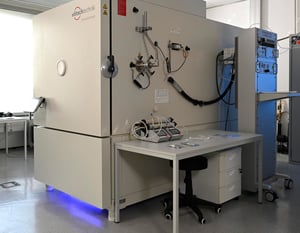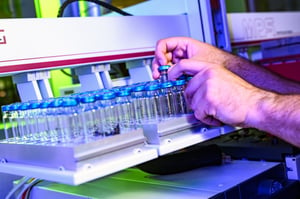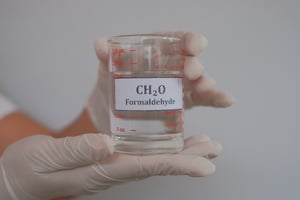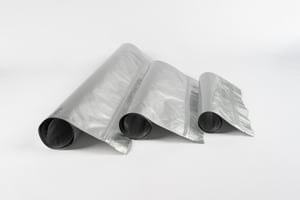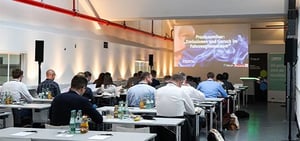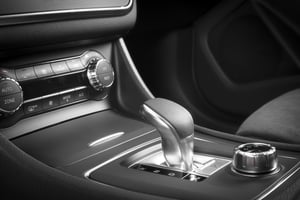
Fogging
Determination of the fogging behavior of materials used in vehicle interiors
FOGGING TEST IN THE
AUTOMOBILE INTERIOR
CORROSION TEST - YOUR ADVANTAGE FOR DURABLE AND CORROSION-RESISTANT VEHICLE COMPONENTS
Corrosion is an electro-chemicalprocess in which metals are attacked by external influences such as moisture, salt and oxygen. This process leads to the formation of rust and other oxide layers, which can significantly weaken the stability and service life of components. Vehicles that are exposed to changing weather conditions and roads on which salt is scattered therefore require effective corrosion protection. To ensure that materials and coatings can withstand these stresses, corrosion testing is a tried and tested method in the automotive industry.
It is crucial for manufacturers to ensure that their products can withstand extreme conditions. Our accredited corrosion tests allow you to check the corrosion resistance of your materials and components. This allows you to ensure that your products meet both market requirements and the high expectations of your customers.
- Typical procedure
- Application examples
Typical corrosion test procedure
Coordination of the customer specification
- Checking the requirements (standards, OEM specifications) and drawing up an individual test plan.
Sample preparation
- Preparation and documentation of test samples in accordance with standard specifications.
Test setup and climate conditioning
- Positioning the samples and setting the ambient conditions.
Performance of the test
- Compliance with and monitoring of the defined test parameters.
Intermediate checks and visual inspection
- Documentation of signs of corrosion during the test cycles.
Final test
- Evaluation of samples in accordance with standards and test plan.
Report preparation
- Preparation of a test report
Application examples
- Metallic components and their alloys
- Coated materials
- Anodic oxide layers
- Organic coatings on metallic materials

Fogging test methods
- DIN 75201-A (reflectrometric)
- DIN 75201-B (gravimetric)
- PV 3015 (Volkswagen)
- GMW 3235-A (General Motors Worldwide)
- PSA D45 1727
- and much more.
Test methods / specifications
- DIN EN ISO 9227
- BMW AA-0129
- Jaguar TPJLR.52.265
- Rivian RTS.1681
- Suzuki SES N 3253
- VW PV 1210
- and much more.
Are you looking for an exam? Standard? Specifications?
Accredited & certified tests
CONTACT OUR EXPERTS
Description. Lorem ipsum dolor sit amet, consetetur sadipscing elitr, sed diam nonumy eirmod tempor invidunt ut labore et
- Tab Title






Frequently asked questions about the fogging test
The sample quantities required for a fogging test depend on the standard and the test method used. Here are the general guidelines:
1. standard DIN 75201 (type A and type B)
-
Type A (glass plate method):
A sample quantity of 10 cm² is typically required. The sample is placed on a heated plate in a sealed chamber and the volatiles released condense on a glass plate above. -
Type B (aluminum foil method):
Similar to type A, a sample volume of approximately 10 cm² is used. However, the volatile substances condense on a cooled aluminum foil.
2. standard ISO 6452 (international standard)
- Sample quantity:
Again, a sample size of about 10 cm² is typically required to evaluate the amount of volatiles released at elevated temperature.
3. other specific requirements
Depending on the specific requirements of the customer or OEM standards, sample quantities may vary. It is important to check the respective standards or test requirements carefully.
Method A - Reflectometric method:
- Principle: This method measures the change in reflectivity on a glass plate on which volatile components from the material sample are deposited.
- Procedure: A material sample is heated in a beaker while a glass plate above it is cooled to 21°C. The temperature difference causes the volatile components to condense on the glass plate. The reflectance index of the fogged glass plate is then measured to determine the amount of condensed material.
- Application: This method is particularly suitable for materials for which an exact determination of the optical fog effect is required.
Method B - Gravimetric method:
- Principle: This method measures the weight of condensed volatiles on an aluminum foil.
- Procedure: The material sample is heated in a beaker while an aluminum foil disc is cooled to 21°C. After 16 hours, the amount of condensed material on the foil is weighed.
- Application: This method is ideal for an accurate quantitative determination of the amount of condensed volatiles.
ENVIRONMENTAL SIMULATION
FREQUENTLY ASKED QUESTIONS ABOUT CORROSION TESTING
- Neutral salt spray test (NSS test)
- Copper accelerated acetic acid salt spray test (CASS test)
- Acidic salt spray test (AASS test)
- NSS (Neutral Salt Spray): Use of a neutral saline solution (pH 6.5-7.2), suitable for general corrosion tests.
- AASS (Acetic Acid Salt Spray): Addition of acetic acid to the solution (pH 3.1-3.3), mainly for coated metals.
- CASS (Copper Accelerated Acetic Acid Salt Spray): copper-accelerated acetic acid salt spray increases the aggressiveness (pH 3.1-3.3), often for decorative coatings.
Yes, we carry out tests in accordance with national and international standards and OEM-specific requirements. imat is accredited for the most important tests. Find out more about our accreditations here.


